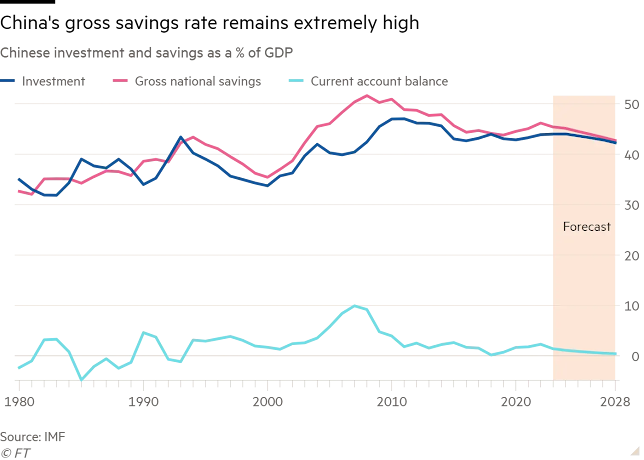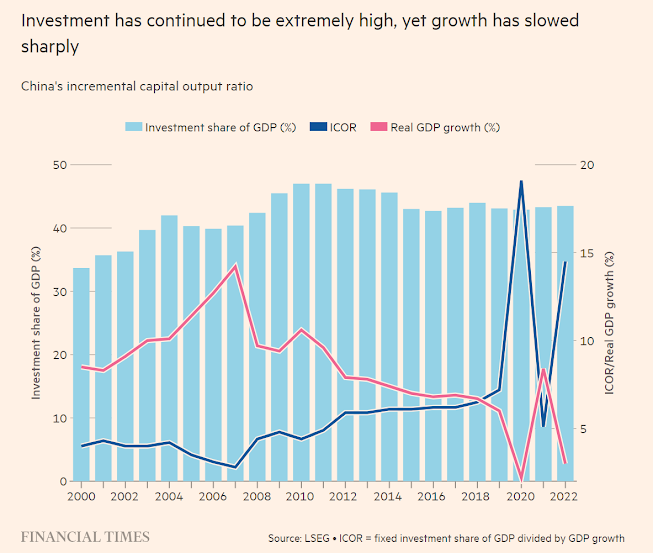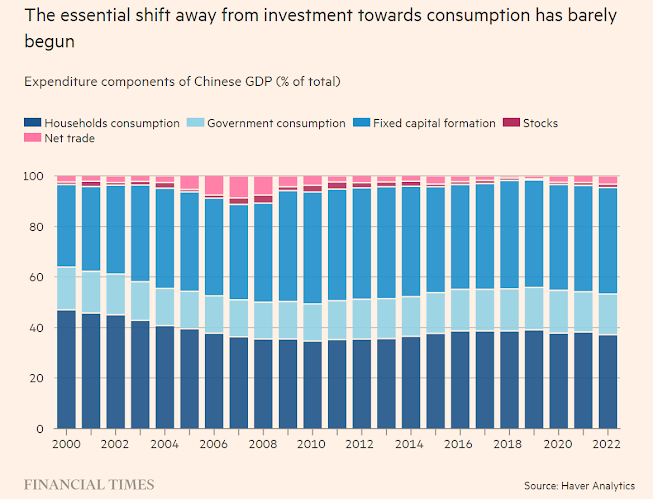How China can avoid the Japan trap
Income needs to accrue to those who will spend it — but this will require redistribution on a significant scale
Martin Wolf
Has China’s period of relatively rapid economic growth come to an end?
That was the focus of last week’s column.
The answer, I argued, was that it still had the potential to catch up on the living standards of the world’s richest countries, because it is relatively poor.
But this does not mean it will do so.
It confronts big obstacles to continuing success.
In this column, I will address one of the most important such obstacles: “underconsumption”.
The past two decades should have eliminated the view that economies tend naturally towards full employment.
On the contrary, excessive propensities to save can generate chronically deficient demand, which needs to be offset by expansionary monetary and fiscal policies.
Though these “solutions” may generate other problems.
The analysis of the global financial crisis of 2007-09 in my book The Shifts and the Shocks largely rested on this point.
I have also noted that excess savings play a central part in the story of Japan’s fall from economic grace.
Germany’s excess savings played a central role in the eurozone crisis.
China’s story is similar, but on a bigger scale.
Its gross national savings peaked at 52 per cent of GDP in 2008.
It was still at 44 per cent in 2019, before Covid hit.
Prior to 2008, nearly a fifth of these huge savings went into China’s current account surplus.
After the crisis, such surpluses became politically and economically unacceptable.
The alternative turned out to be even higher investment, much of it in property.
Gross investment rose from 40 to 46 per cent of GDP from 2007 to 2012. (See charts.)
Yet this rise in investment coincided with a marked fall in the growth rate.
This combination can be indicated by changes in the “incremental capital output ratio” — the ratio of the investment to the growth rate.
This rose substantially, from a low of three in 2007, to a pre-Covid peak of seven, in 2019.
This indicates a marked fall in the return on investments.
Meanwhile, as I noted last week, the debt ratio soared, adding financial fragility to the picture.
As long ago as 2007, Wen Jiabao, then premier, warned that the Chinese economy was “unstable, unbalanced, uncoordinated, and unsustainable”.
He was right.
Michael Pettis of Peking University’s Guanghua School of Management has made the same argument in detail on many occasions.
It is impossible to know when unsustainable processes will come to an end.
But they will: as the late Herb Stein told us: “If something cannot go on forever, it will stop.”
It looks as though the unbalanced economy is now being stopped by a mighty property crash.
According to UBS, new property starts in July were 65 per cent below their level in the second half of 2020.
It also expects property sales and construction to stabilise at 50-60 per cent of the peak reached in 2020-21.
Since the property sector accounts for about a quarter of China’s economy, this suggests enduring weakness in demand and so something of a Japanese future.
The danger is not one of a huge financial crisis: China is a creditor country; its debts are overwhelmingly in its own currency; and its government owns all the important banks.
A policy of financial repression would work quite well.
The danger is rather one of chronically weak demand.
It will be impossible, in today’s global environment, to generate either a huge export boom or consistent current account surpluses.
The investment rate is already spectacularly high, while growth is slowing.
Still higher non-property investment cannot be justified.
The obvious alternatives are higher public and private consumption.
But, given the financial difficulties of local governments, the former will require higher spending by central government.
Meanwhile, the latter will require a shift in the distribution of income towards households. Neither seems at all likely.
The central government appears too timid to take such drastic steps.
The basic reality of the Chinese economy is that household consumption is only around 40 per cent of GDP.
Yes, this is partly because the household savings rate averaged about 35 per cent of household disposable income in pre-Covid years.
But it is even more because household disposable incomes are only some 60 per cent of GDP.
The other 40 per cent accrues to other institutions, namely, governmental entities, state-owned enterprises and private corporates.
The savings rate of these entities appear to have been around 60 per cent of total incomes.
That puts the vaunted household savings rate in the shade.
China is in fact hyper-capitalist.
An enormous proportion of national income goes to the controllers of capital and is being saved by them.
During the earlier hypergrowth period, this worked well.
But now the savings are far greater than can be productively used.
Income now needs to accrue to those who will spend it.
This would generate higher growth of consumption in the medium term and higher levels of consumption in the long run, so providing a solid basis of domestic demand for future expansion.
But this will require redistribution of income and assets towards ordinary people together with a marked shift in the focus of public spending.
It will also demand an early restructuring of outstanding debts.
This looks like a decisive moment in China’s modern economic history.
If the government recognises that the old high-saving, high-investment model is broken, it can generate reasonable growth with a more balanced consumer-led economy.
A savings rate of, say, 30-35 per cent of GDP would be enough.
But, to reach anything like this it must make revolutionary changes in income distribution and the priorities of government.
This would be good for China.
It can avoid the Japan trap.
But will it?







0 comments:
Publicar un comentario